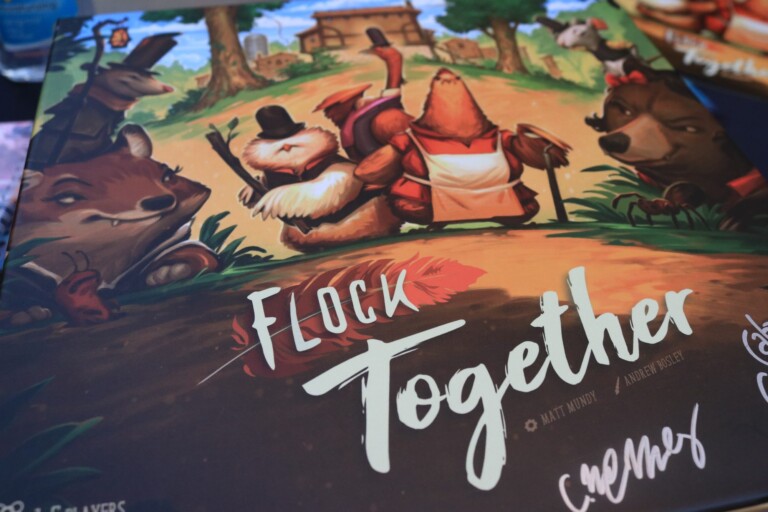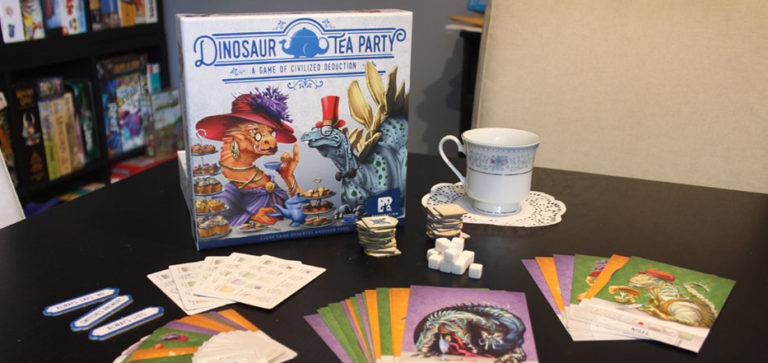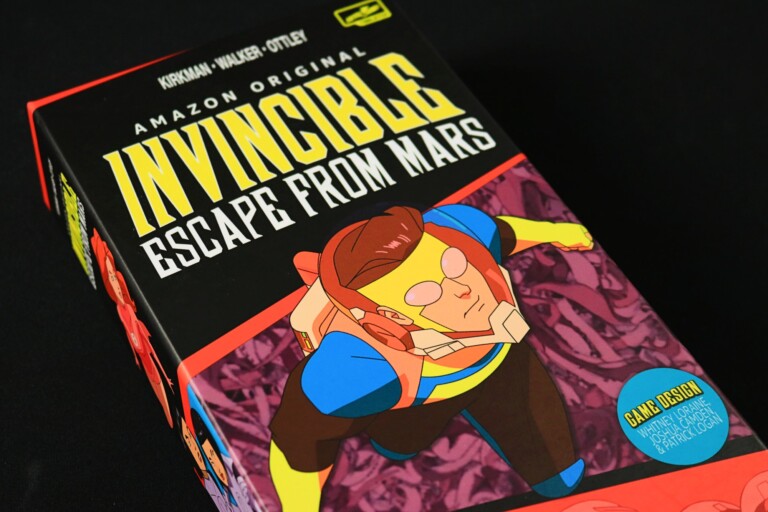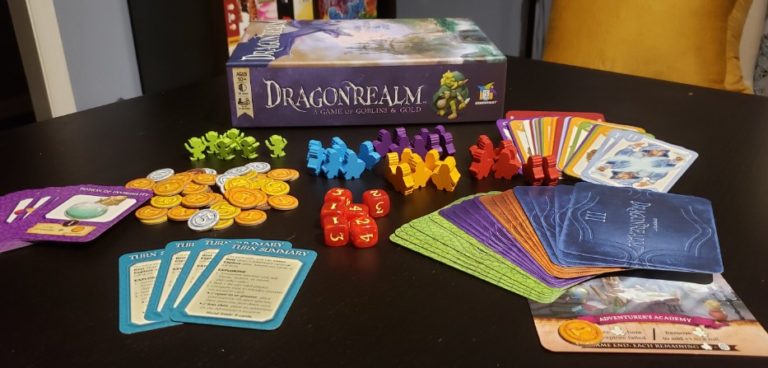If you came here for the review of a popular clothing store that was all the rage in the 90’s; you’re in the wrong place. If you came here looking for a quick and fun card game from Arcane Wonders, then you’re in luck!
The Gameplay
GAP was released at Origins this Summer and was one of the games we were most excited to check out at the convention. This card game is pure set collection that gains its name from the way players score at the end of each round.
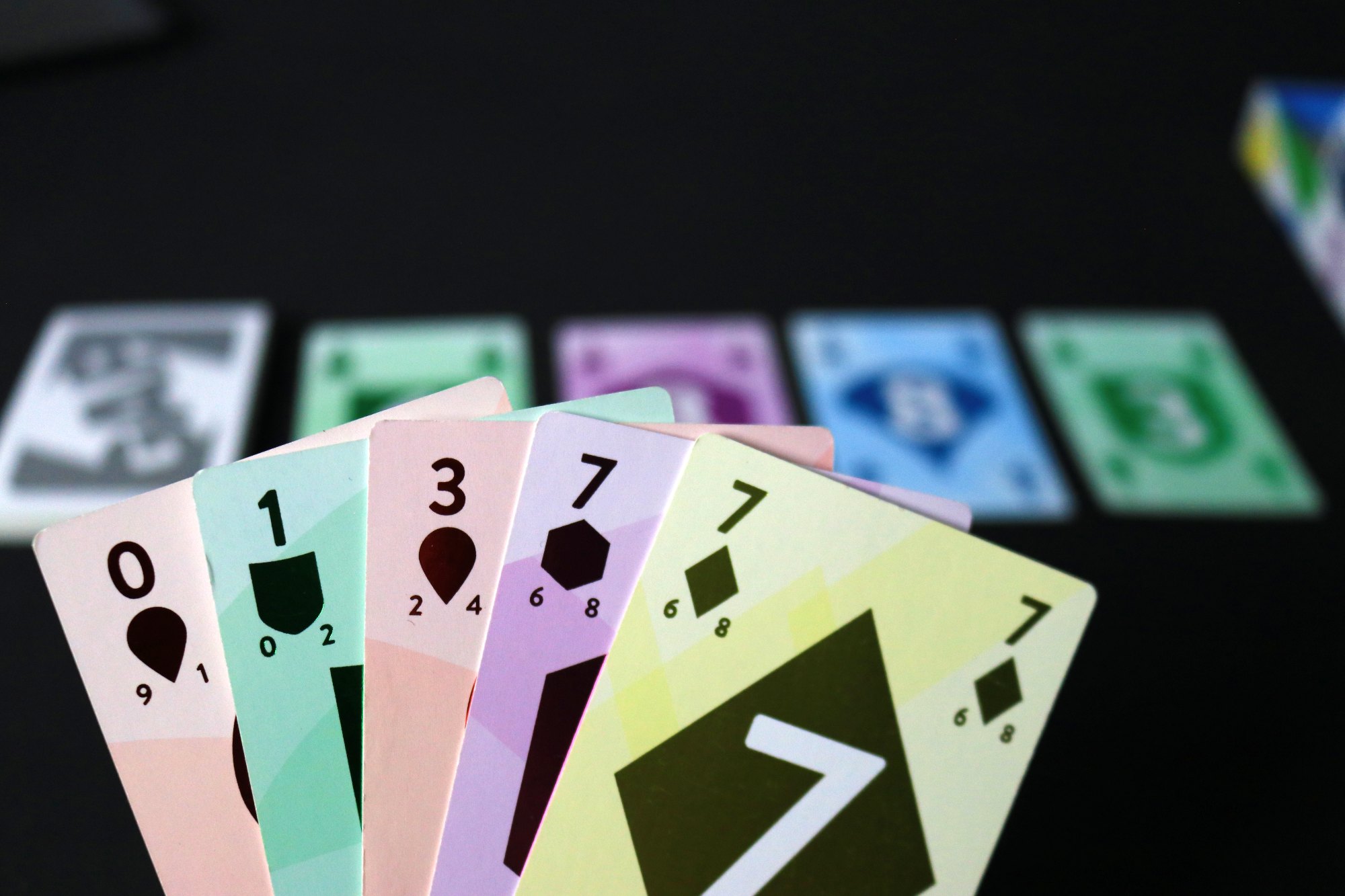
Starting with a hand of 5 or 6 cards (based on player count), turns move quick around the table as you play a single card. The foil finished cards in the game have a number and a colored geometic shape on the card face. Rounds start with 4 cards face up in the center of the table.
When you play a card from your hand, you’ll check the center of the table for a matching number(s). For example, if you play a 4 yellow and there’s a 4 green in the center, you collect both 4 cards and place them in front of you based on color. You’ll collect all cards with identical numbers regardless of the card color.
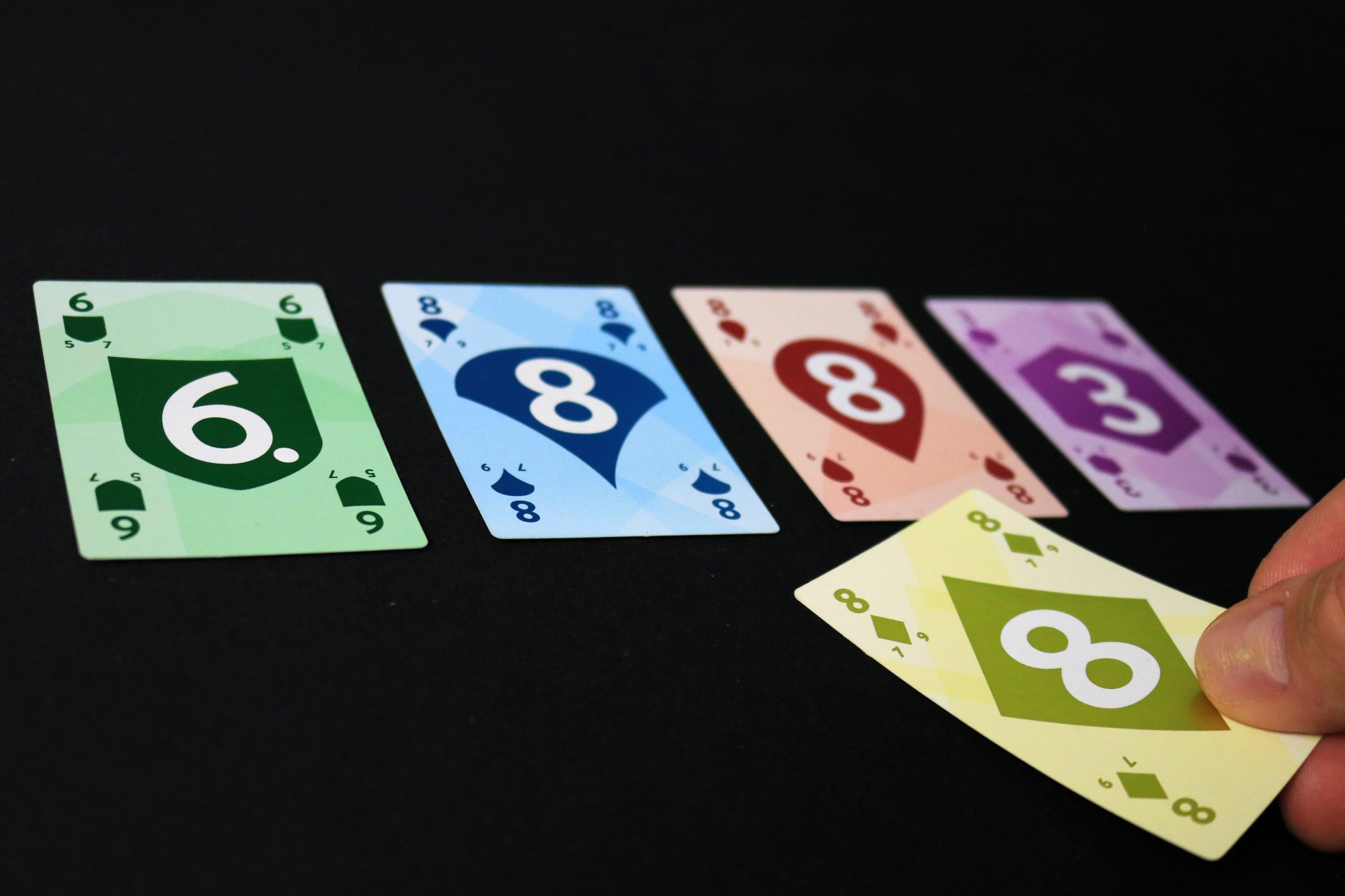
If your played card doesn’t have a numerical match, look for the two numbers that are adjacent to the number you played. If you play a 5, the adjacent numbers would be 4 and 6. You will collect one of each of these numbers from the center display.
If you play a card without a numerical match and no adjacent numbers in the display, you’ll add your card to the display. This increases the number of cards available to 5 for the next player.
In short, you’re playing numbers to recruit sets of colors into your tableau.
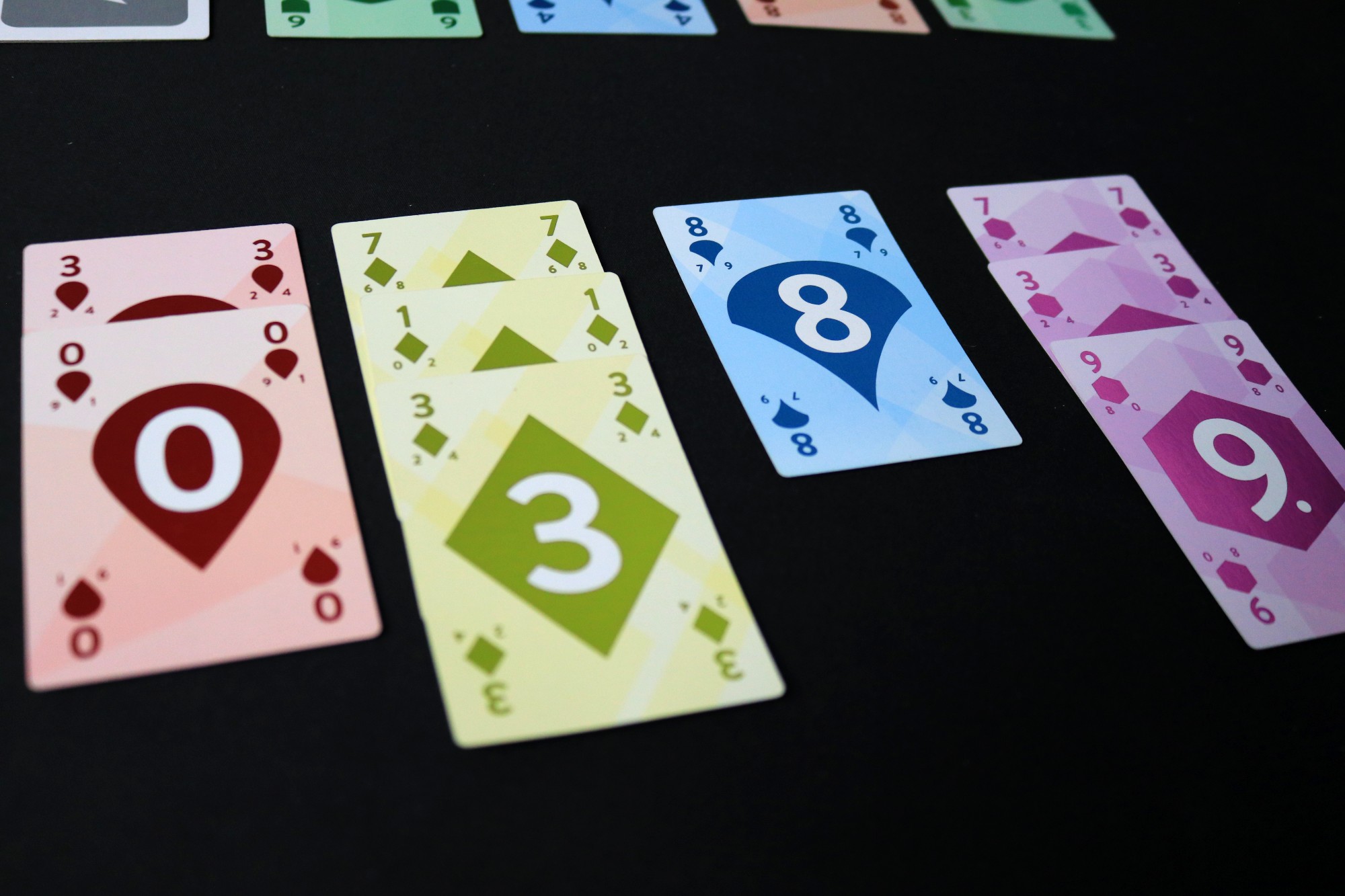
Big Versus Small
The gameplay in GAP is simple to teach and moves fast once players understand the mechanics. After all cards are played, players score points based on their largest color set of cards MINUS their smallest set. When your color sets are tied, their numbers are added together. This applies to your largest and smallest sets.
For example, if you end the round with 4-red, 4-yellow, 3-pink and 2-blue, you would combine your red and yellow cards since they were tied for first. You would score 8 (red/yellow) positive points and minus 2 points (blue) for a total score of 6. You’re essentially scoring the gap between your largest set(s) and your smallest set(s). If you have a tie with your smallest color sets, you would combine them in the same way.
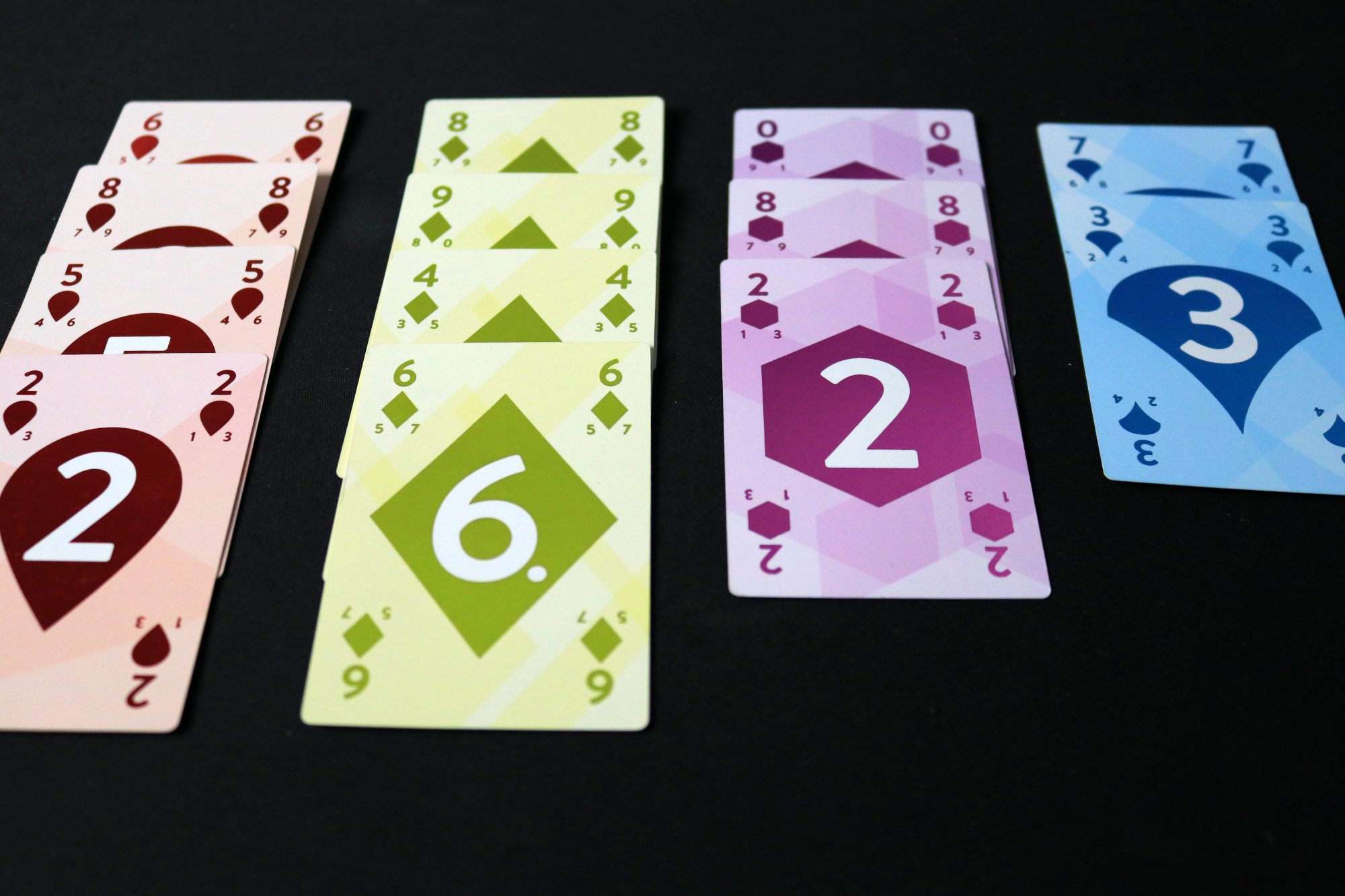
Each color set has only 10 cards (0-9) which makes it easy to evaluate what cards could still be available during a round. Creating these ties are the way you earn the most points in a single round.
Minding the Gap
I’ve played GAP a couple dozen times with as few as 2 players and as many as 6. GAP is doing something clever that keeps pulling me back in. There’s a puzzle here that challenges players to build even sets of cards while keeping one color set as small as possible.
Players can plot, plan and prepare as they build sets higher and higher. Sometimes, you can even convince yourself that it’s possible to build your color sets in a way where you don’t receive any negative points. It’s possible, but rare.
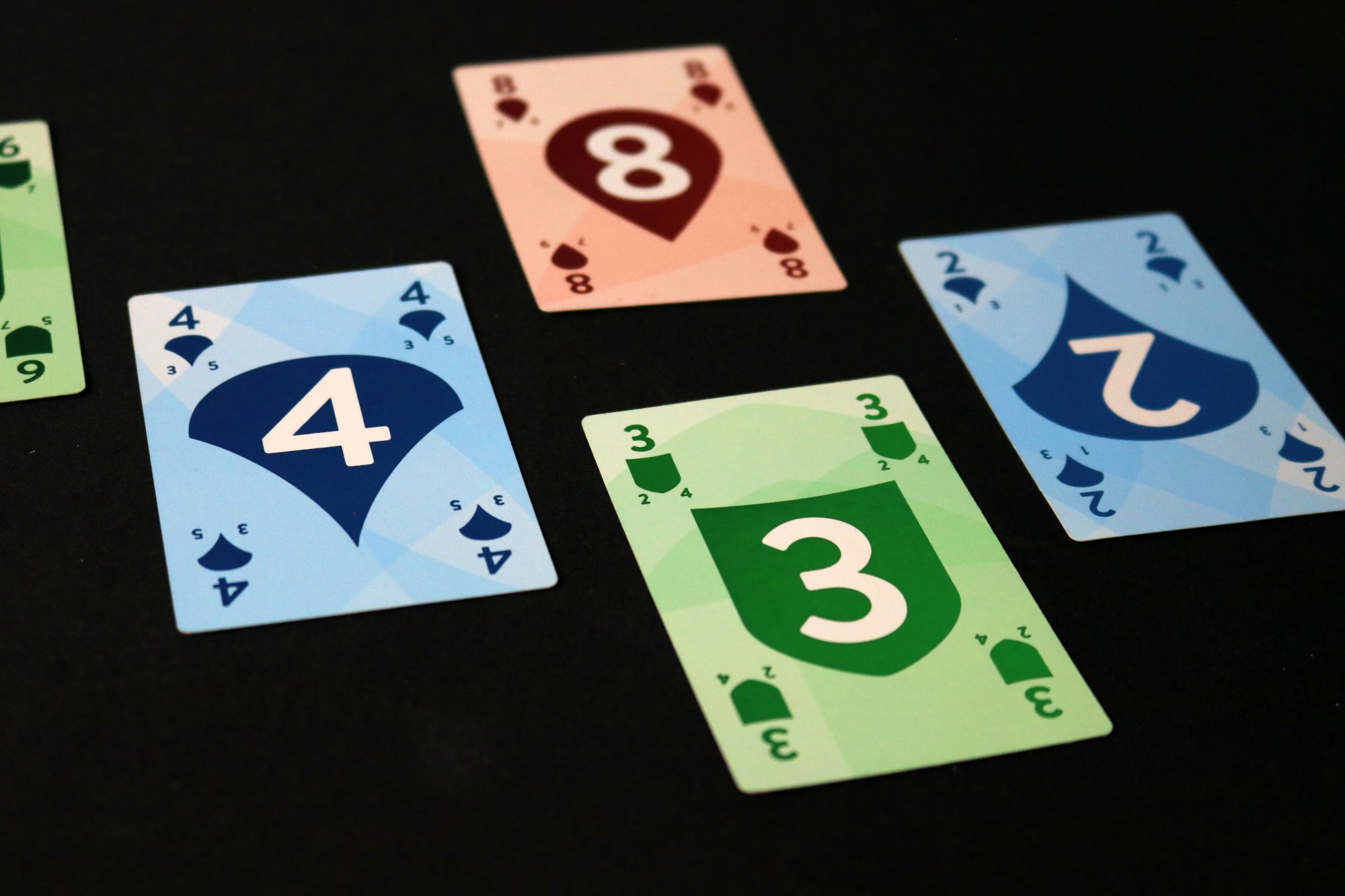
In my very first game, I sat there with 2 beautiful sets of blue and yellow cards. With a single card in hand and one adjacent card in the center of the table, I was about to end the game with two sets of 7 cards leading to 14 points. The player before me took an inconsequential card from the center. The next card that flipped out led to my downfall. My last card play led to taking two blue cards (adjacent numbers), leaving me with my largest set (8-blue) minus my smallest set (7-yellow). I scored 1 whole point.
Some Gaps in the Fun
I really like GAP, but I have some genuine issues with how random the end of most rounds feel. Since every card in your hand is played, the best plan is to evaluate which card number/color will hurt the least about half-way through the round. If you’re not watching what others have collected and what’s on the table, your final card play can feel totally random. I’ve seen swings from double digit scores be reduced to a single point or even negative points based on the final card.
Rounds of GAP play so quickly that it’s tough to stay mad to the game. There’s a level of luck at the end of each round that can be an absolute turn off.
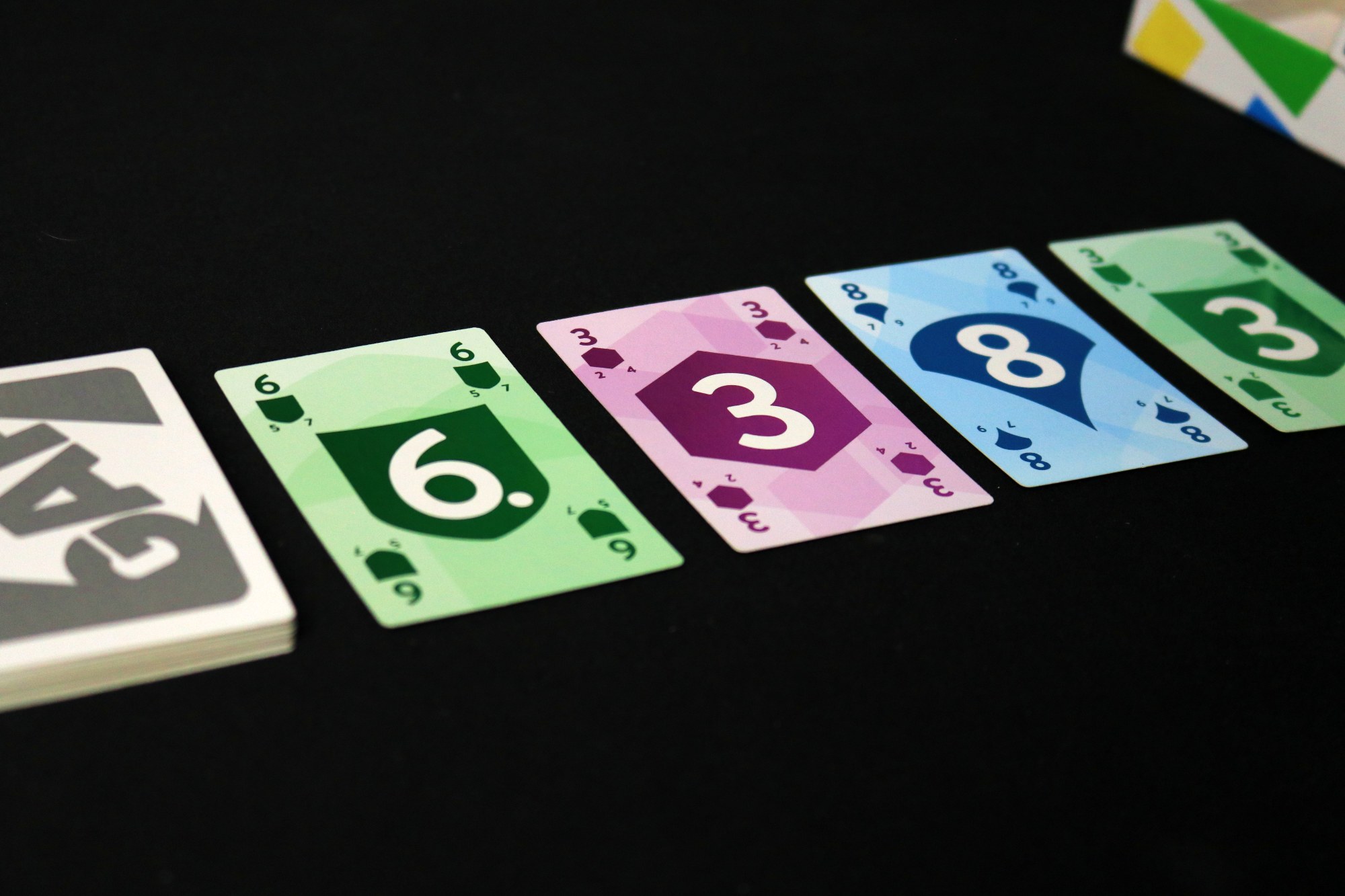
I will say that I have a strong preference when it comes to player count. In a 5 or 6 player game, players are given 5 cards to play. Planning feels foolish as you wait for the players around the table to pick apart the cards in the center of the table like birds at a bug buffet. By the time it’s your turn, you just make the best of what’s left.
At 2 or 3 players, GAP feels far more strategic. There’s very little downtime and the card you had an eye on might actually still be there on your turn. With the smaller player count, you’ll remove 1 or 2 color sets which keep games competitive and tight.
In the rulebook for GAP, they suggest playing to 15 points (short game), 30 points (medium game) or 70 points (long game). It only takes 1 game to realize that these numbers mean nothing. In well over 20 games of GAP, the highest score in a round has been 12 with most players scoring an average of 4 points. Playing to 15 points usually takes us around 20 minutes which feels right for this game. While I’ve never tried it, I’m almost positive that a game to 70 points would take us over an hour. Players should just agree to a point value to trigger the end of the game before playing.
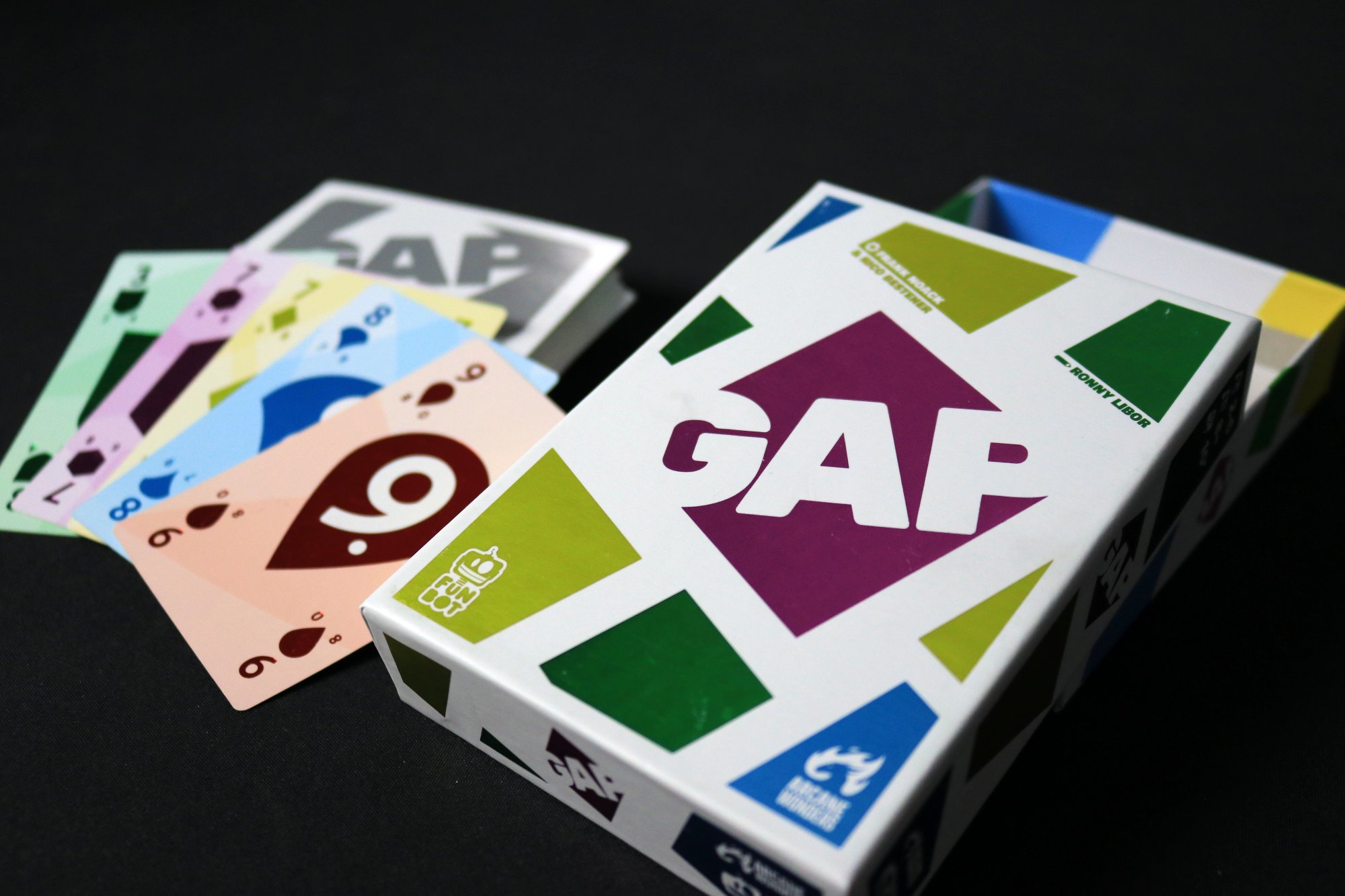
Final Thoughts
I can’t think of another card game in our collection that has me as conflicted as GAP does. I love the puzzle it presents and it’s a really accessible game for new and seasoned gamers. However, I’ll probably never play this game with 5 or 6 players again. It feels more tedious than fun as your score slowly climbs a couple points at a time. No matter what, the end of the round often feels so random as a single card rolling out can demolish the 4 or 5 previous plays.
I guess the question is, would I buy the game again with the knowledge that I have now? Yes, I absolutely would. GAP is fast, fun and feels different than most of the card games in our collection. Because of the level of luck in the game, GAP will never be my go-to card game but it will see plenty of time at the table.
GAP is now available to purchase on the Arcane Wonder webstore or online through Amazon.
Highs
- Easy to teach and rounds are quick
- Game plays great at 2 to 4 players
- Scoring mechanic is tricky and clever
Lows
- End of round luck can be a big turn off
- Not a fan of the game at higher player count
- Glossy card quality feels cheap
Complexity

Time Commitment

Replayability


